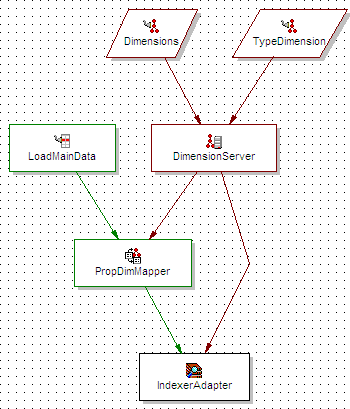There are two pipeline components that support dimensions: dimension adapters and dimension servers.
Dimension adapters
Developer Studio stores dimension hierarchy information in an XML file that the documentation and reference implementations generically call Dimension.xml (you can name it anything you like). A dimension adapter reads data from and writes data to this file. The attributes of a dimension adapter describe where the dimension file is located, its format, and various aspects of processing. A data pipeline can have more than one dimension file, allowing you to provide dimension data from multiple sources. Each dimension file requires its own dimension adapter.
Dimension server
Dimension servers work in conjunction with dimension adapters, and serve as a centralized source of dimension information for all other pipeline components:
- Dimension adapters load dimension information from your dimension source files.
- The dimension server gets its dimension information from the dimension adapters.
- Other pipeline components get their dimension information from the dimension server.

Setting up your pipeline in this way allows you to change your dimension adapters as needed without having to change the dimension source for all other pipeline components that require dimension information.
Persisting auto-generated dimensions
In addition to functioning as a centralized source for dimension information, dimension servers also coordinate the loading and saving of automatically-generated dimension information. Auto-generated dimensions are persisted in the file location that is specified in the Dimension Server editor

Supplying dimension data to property mappers
Your pipeline's property mapper requires a dimension server as its source of dimension data.
An example
The following pipeline example has two dimension adapters, Dimensions and TypeDimension, that both feed a dimension server, DimensionServer. DimensionServer provides dimension data to the pipeline's property mapper, PropDimMapper.

